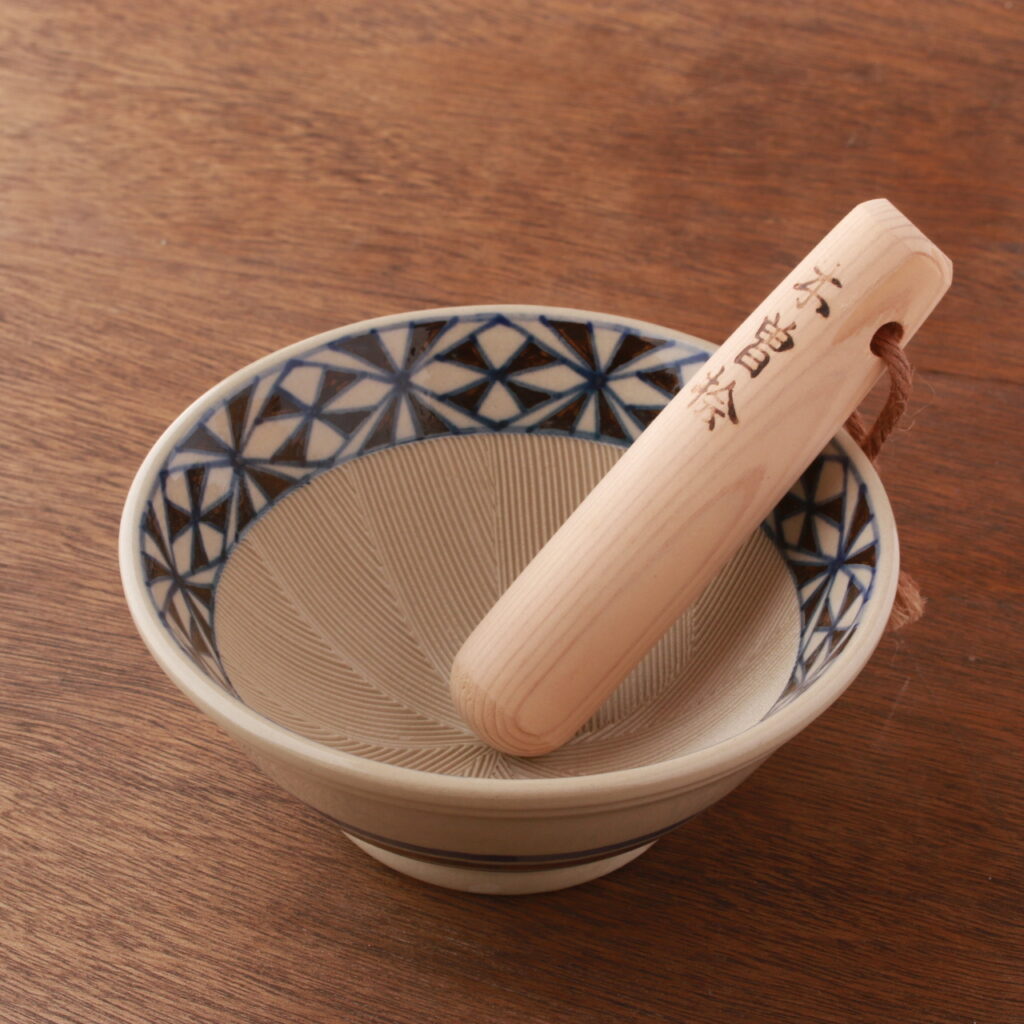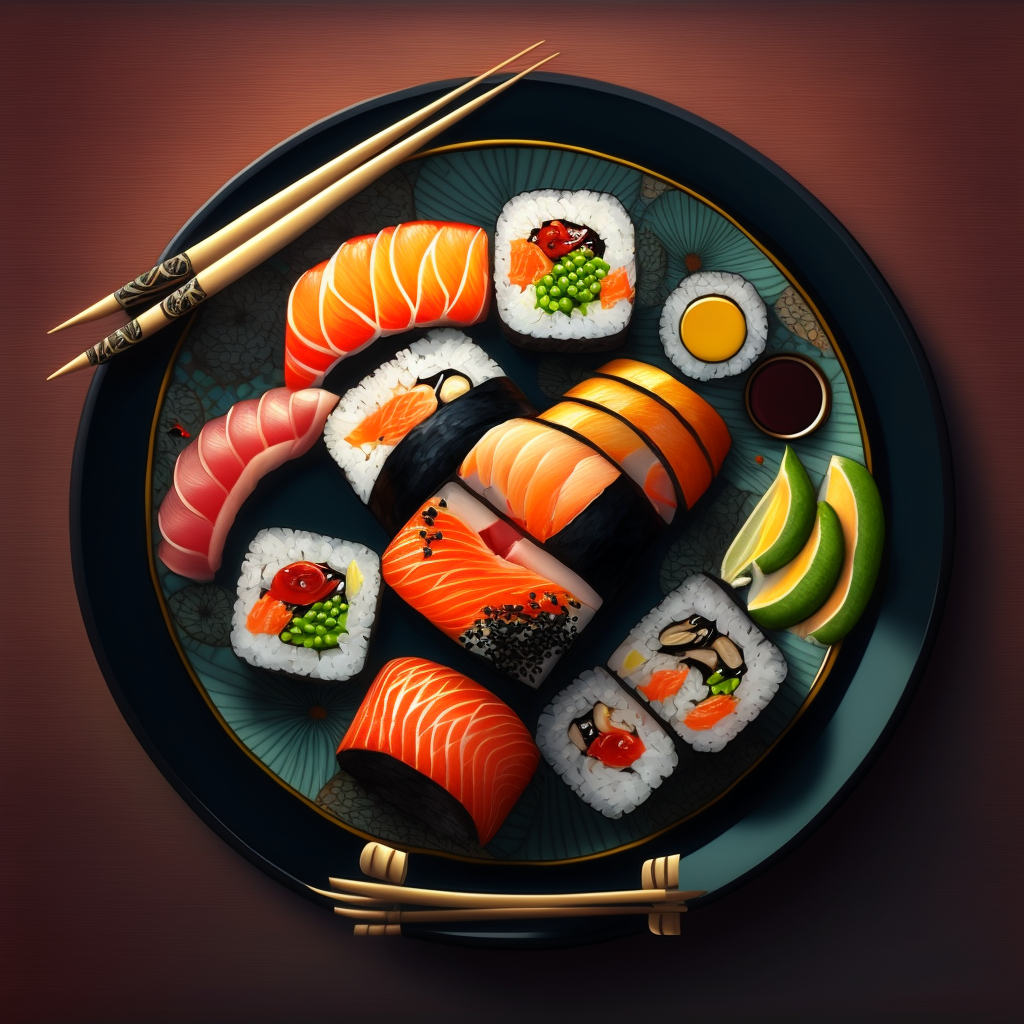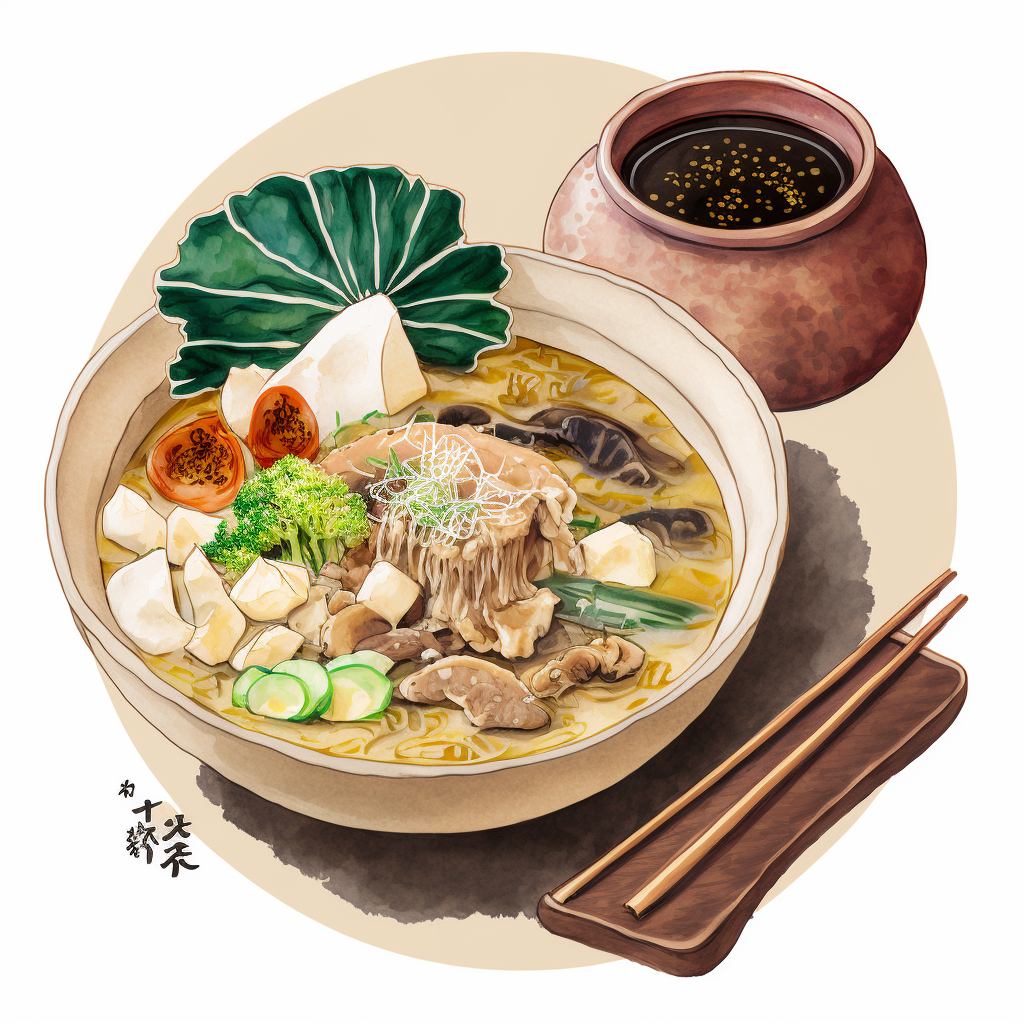The suribachi (すり鉢or 擂钵) is a traditional Japanese tool used to grind ingredients for the preparation of dishes such as goma-ae (sesame seasoned spinach) and miso soup. It is a ceramic or stone bowl with raised ribs on the inside, called kushi-no-me, which are designed to facilitate grinding of ingredients.
The suribachi has a long history in Japan, dating back to prehistoric times. It is known to be used in Japanese cooking since the 8th century. The shape and size (10cm to 30cm in diameter) of the bowl varies in different parts of Japan, but the basic shape is the same, with a flat bottom and a high wall.
The most common ingredients ground in a suribachi are sesame seeds and nuts. Sesame seeds are ground in the suribachi to produce a sesame paste called goma miso. Nuts, such as cashews and macadamia nuts, are also ground in the suribachi to produce spreads.
To use a suribachi, first place the ingredients to be ground in the bowl. Then, you need to use a wooden pestle called a surikogi (すりこぎor 擂粉木) to crush the ingredients against the ribs of the suribachi. It is important not to press the ingredients too hard to avoid grinding them too finely.
The suribachi is a versatile tool in Japanese cooking, used in the preparation of many dishes. It is also used in tea ceremonies to grind matcha green tea into fine powder.
find here our suribachi mortars on nipponboutique



